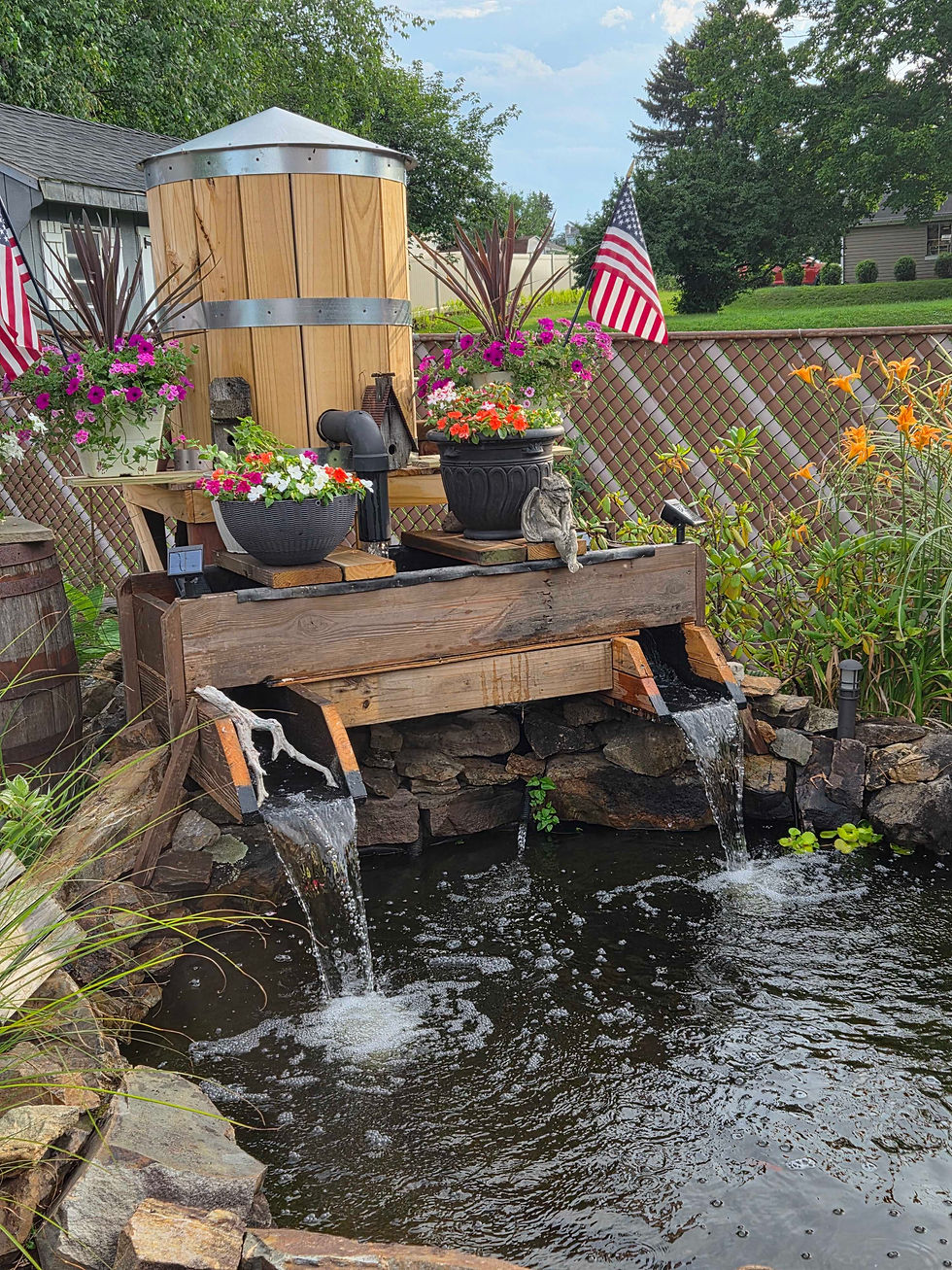
Garden Water Towers for Sale!
Our Wooden Water Towers add that country charm to any outdoor space. We have tall water towers and small water towers for the home, yard or garden. They can be out in the open natural habitat, such as a large yard or even paired with our decorative windmill. When paired, they look extraordinary together, giving that old time appeal! Some people love the old fashion water tower allure, bringing back memories of childhood. Or, they can be a featured as an accessory in a smaller garden, or add curb appeal as you enter your driveway! Best part, these water towers are made here in America.
They are sold as decorative pieces, but some customers have used 55-gallon drums to convert them into a functioning wood water storage tank creating their own water reservoir for gardens. One customer attached a downspout to the back of the garden water tower and collected rain water. Attaching a spigot and hose from a local hardware store, they were able to use the stored water for the plants growing near their big water tower.
Our Texas water towers are also a great way to add height to your landscape. They are attractive when placed next to our windmills or chuck wagons. Our garden water Towers are constructed with stained, pressure treated yellow pine and galvanized steel. They come in several popular sizes and we do offer budget-friendly options.
We offer two options, buy a completed Wooden Water Tower and ship as a whole (separate shipping cost to be added, quote given prior to purchase) or a more budget friendly choice is to buy our garden water tower diy with metal parts only. You could build a water tower and save the expensive shipping fees. This DIY wooden water tower metal parts only kit comes with a complete materials list and sketched drawings with instructions on how to build the garden water tower (FREE SHIPPING for this option). Sometimes customers use recycled lumber or old fence posts as the body of this diy water tower. This is not a project for beginners.
Historically, water tanks have been around since the mid-1800s. They had several purposes to reserve water; provide fire protection to small towns or farms, supply water for steam engines of the early trains, and to provide drinking water. They were once, a much needed infrastructure to help with survival. Some current homesteaders are returning to this old method as part of their preferred life-style of living “off-the-grid”.












